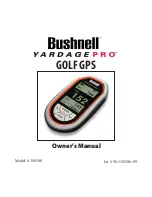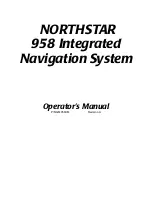
your position is our focus
3 Receiver Description
3.1 Dead Reckoning enabled GPS module (DR module)
3.1.1 Architecture
A
Dead
Reckoning
enabled
ANTARIS
®
4
GPS
Receiver
contains
an
ANTARIS
®
4
GPS
module
with
the
addition
of
an
Enhanced
Kalman
Filter
(
see Figure 7
).
Connected
to
the
DR
module
are
a
turn
rate
sensor
(gyroscope)
with
a
temperature
sensor,
odometer
(speedpulse
signal
source)
and
a
direction
indicator
(forward
–
backward.).
Similar
to
the
ANTARIS
®
4
GPS
modules,
the
DR
module
supports
active
and
passive
antennas
and
has
an
optional
antenna
supervisor
circuitry.
Two
serial
ports
are
available
for
communication
(see
Section on Serial
Communication in Antaris
®
4 System Integration Manual [5]
)
and
are
freely
configurable
for
NMEA
or
u-blox
proprietary
protocols.
It
provides
a
TIMEPULSE
signal
for
timing
synchronization
(see
Section on Timing in
Antaris
®
4 System Integration Manual [5]
).
In
order
to
store
any
DR
specific
data
such
as
last
position,
current
heading,
calibration
data,
the
temperature
compensation
table
(TC)
etc.,
a
DR
module
requires
a
backup
battery.
Furthermore,
these
data
are
stored
in
Flash
in
repetitive
intervals.
!
Note
Do
not
use
any
power
saving
modes
(e.g.
FixNow™
Mode)
as
the
DR
algorithm
and
power
saving
modes
are
incompatible.
3.1.1.1
Enhanced Kalman Filter (EKF)
The
Enhanced
Kalman
Filter
is
the
core
of
the
ANTARIS
®
4
DR
Technology.
It
combines
all
the
sensor
signals
(odometer,
direction
indicator,
gyroscope,
temperature),
which
are
sampled
with
40
Hz
and
combines
them
with
the
GPS
solution.
The
GPS
Kalman
Filter
and
the
Enhanced
Kalman
Filter
are
tightly
coupled
to
produce
the
best
position
solution
from
both,
the
GPS
system
and
the
sensor-based
system.
The
weighting
between
both
systems
is
controlled
by
GPS
quality
indicators
(e.g.
DOP
values,
number
of
SV,
residuals
etc.)
and
variances
for
all
DR
related
parameters.
LEA-4R
/
TIM-4R
-
System
Integration
Manual
/
Reference
Design
Receiver
Description
GPS.G4-MS4-05043
Page 15














































